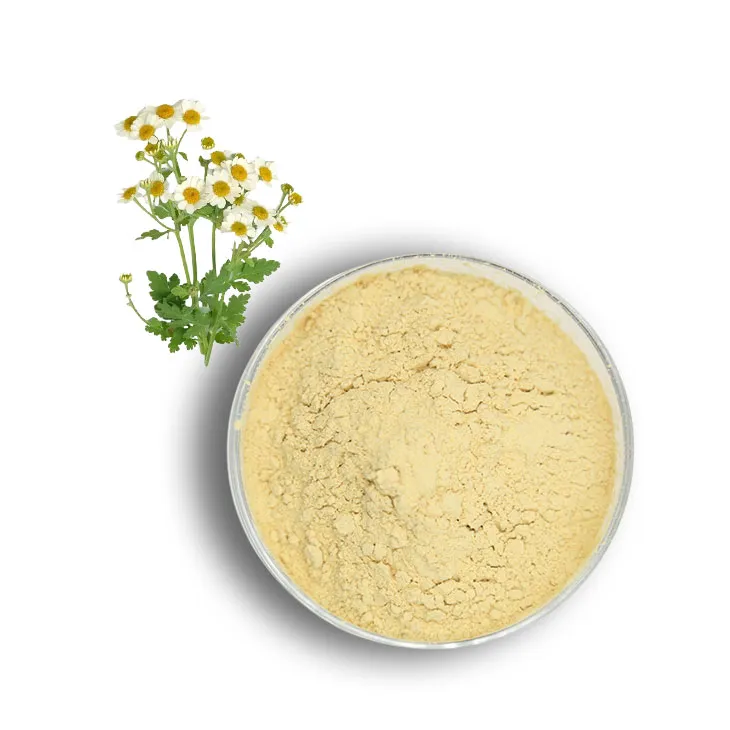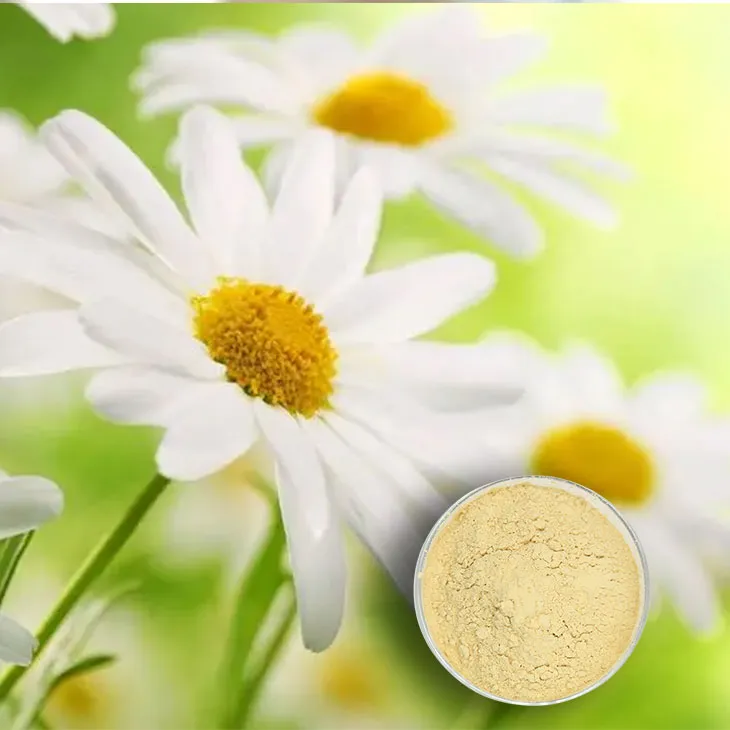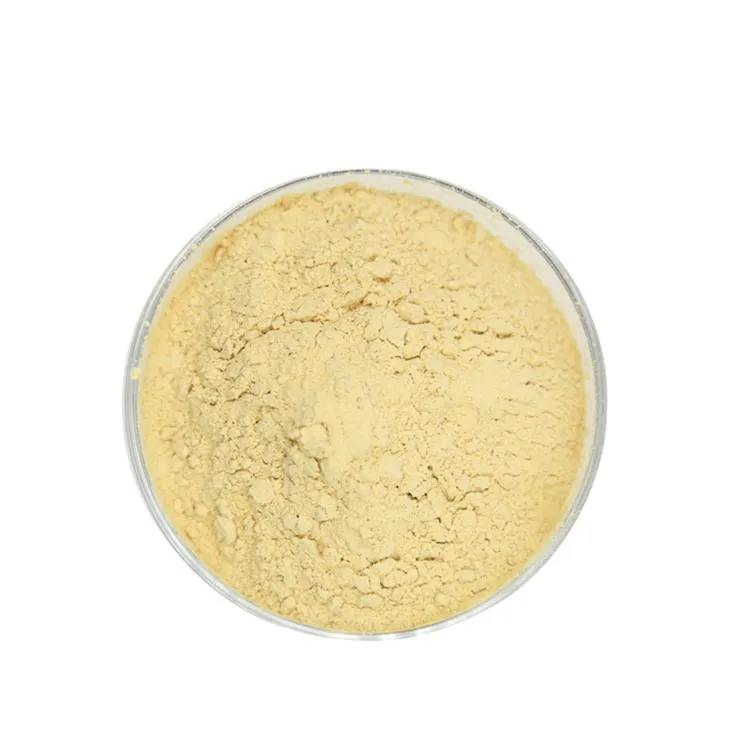- 0086-571-85302990
- sales@greenskybio.com
Optimal Bioavailability of Feverfew Extract.
2024-11-30

1. Introduction
Feverfew (Tanacetum parthenium) has been used for centuries in traditional medicine for various purposes, especially for the treatment of migraines, inflammation, and fever. In recent years, its extract has attracted increasing attention in the fields of medicine and health products. However, to fully realize its therapeutic potential, it is crucial to understand and optimize its bioavailability.

2. Factors Affecting Bioavailability of Feverfew Extract
2.1 Extraction Methods
The method used to extract feverfew can significantly impact the bioavailability of its active compounds. Traditional extraction methods such as solvent extraction (e.g., using ethanol or methanol) may not be as efficient as some modern techniques. For example, supercritical fluid extraction (SFE) has the potential to yield a more pure and bioavailable extract. SFE uses carbon dioxide under supercritical conditions, which can selectively extract the desired compounds while leaving behind unwanted impurities. This results in a higher concentration of the active ingredients in the extract, which may lead to better bioavailability.
Another extraction method is microwave - assisted extraction (MAE). MAE can reduce the extraction time compared to traditional methods and may also enhance the extraction of certain bioactive compounds. The shorter extraction time can help to preserve the integrity of the active compounds, which is important for their bioavailability. However, different extraction methods may also change the chemical composition of the extract, which in turn affects how the body absorbs and utilizes the extract.
2.2 Dosage Forms
The dosage form of Feverfew Extract also plays a vital role in its bioavailability. Capsules are a common dosage form. However, the dissolution rate of the capsule shell and the release of the extract within the gastrointestinal tract can affect bioavailability. If the capsule shell does not dissolve quickly enough, the release of the extract may be delayed, resulting in lower bioavailability.
Tablets are another option. The compression process during tablet formation can influence the physical properties of the extract, such as particle size and porosity. These factors can impact the dissolution and subsequent absorption of the active compounds. For example, if the tablet is too hard, it may not disintegrate easily in the stomach or intestine, leading to poor bioavailability.
Liquid formulations, on the other hand, may offer better bioavailability in some cases. Since they do not require dissolution like solid dosage forms, the active compounds in liquid formulations can be more readily available for absorption. However, liquid formulations may also have stability issues, and the addition of preservatives or other additives may affect the bioactivity of the extract.
2.3 Individual Differences
Individual differences among patients can have a significant impact on the bioavailability of Feverfew Extract. Genetic factors play a role. Some individuals may have genetic variations that affect the enzymes involved in the metabolism of the active compounds in feverfew. For example, certain cytochrome P450 enzymes are responsible for metabolizing many drugs and natural products. Genetic polymorphisms in these enzymes can lead to differences in the rate of metabolism, which in turn can affect the bioavailability of feverfew extract.
Age is another factor. Elderly patients may have reduced gastrointestinal motility and function, which can slow down the absorption of feverfew extract. In contrast, younger patients may have more efficient absorption processes, but they may also have different tolerance levels to the extract. Additionally, gender differences may exist. Hormonal differences between males and females can potentially influence the way the body processes and absorbs feverfew extract.
Underlying health conditions also matter. Patients with gastrointestinal disorders such as irritable bowel syndrome or Crohn's disease may have impaired absorption mechanisms. For example, in patients with Crohn's disease, the inflamed intestinal mucosa can reduce the surface area available for absorption, thus decreasing the bioavailability of feverfew extract.

3. Strategies to Improve Bioavailability
3.1 Formula Optimization
One strategy to improve the bioavailability of feverfew extract is through formula optimization. This can involve adding excipients that enhance absorption. For example, certain surfactants can improve the solubility of the extract in the gastrointestinal fluids, making it more accessible for absorption. Additionally, combining feverfew extract with other natural or synthetic compounds that have synergistic effects can also enhance bioavailability.
Another aspect of formula optimization is the control of particle size. Reducing the particle size of the extract can increase its surface area, which promotes faster dissolution and absorption. Nanoparticle formulations of feverfew extract are being explored. These nanoparticles can be designed to have specific properties such as improved stability and targeted delivery to certain tissues or cells, which can enhance the bioavailability and therapeutic efficacy of the extract.
3.2 Administration Route Optimization
Optimizing the administration route is another important strategy. Oral administration is the most common route for feverfew extract. However, as mentioned before, it is subject to various factors that can limit bioavailability. Alternative routes such as transdermal administration are being investigated. Transdermal patches can provide a continuous and controlled release of the extract, bypassing the first - pass metabolism in the liver that occurs with oral administration. This can potentially increase the bioavailability of the extract.
Sublingual administration is also an option. The rich blood supply under the tongue allows for rapid absorption of the extract into the systemic circulation, avoiding the harsh environment of the gastrointestinal tract. However, formulating feverfew extract for sublingual administration requires careful consideration of factors such as taste, solubility, and stability.
3.3 Personalized Dosing Based on Genetic Testing
Given the impact of genetic factors on bioavailability, personalized dosing based on genetic testing holds great promise. By identifying genetic polymorphisms in patients that are relevant to the metabolism of feverfew extract, healthcare providers can adjust the dose accordingly. For example, patients with genetic variants that lead to slow metabolism may require a lower dose to avoid potential toxicity, while those with rapid metabolism may need a higher dose to achieve the desired therapeutic effect.
Genetic testing can also help in predicting potential drug - extract interactions. Some patients may be taking other medications that interact with feverfew extract at the genetic level. By understanding these interactions through genetic testing, healthcare providers can make more informed decisions about the concurrent use of medications and feverfew extract, ensuring both safety and optimal bioavailability.

4. Conclusion
In conclusion, the bioavailability of feverfew extract is a complex issue that is influenced by multiple factors including extraction methods, dosage forms, and individual differences. By understanding these factors and implementing strategies such as formula optimization, administration route optimization, and personalized dosing based on genetic testing, we can improve the bioavailability of feverfew extract. This will not only enhance its therapeutic potential in the treatment of various diseases but also contribute to the development of more effective and safer medicine and health products containing feverfew extract.

FAQ:

What are the main factors affecting the bioavailability of feverfew extract?
The main factors include extraction methods, dosage forms, and individual differences. Different extraction methods can result in different compositions and purity of the extract, which may influence how the body absorbs and utilizes it. Dosage forms such as tablets, capsules, or liquid formulations can also have an impact on bioavailability. Additionally, individual factors like a person's metabolism, gut microbiota, and genetic makeup can lead to differences in how the feverfew extract is processed in the body.
How can formula optimization improve the bioavailability of feverfew extract?
Formula optimization can involve combining feverfew extract with other substances that enhance absorption. For example, adding certain lipids or surfactants can improve the solubility of the extract in the gastrointestinal tract, making it more accessible for absorption. Adjusting the pH of the formula or including specific carriers can also protect the extract from degradation in the digestive system and promote its uptake by cells.
What is the significance of optimizing the administration route for feverfew extract bioavailability?
Optimizing the administration route can directly affect how quickly and completely the feverfew extract reaches the target tissues. Oral administration is common but may be subject to first - pass metabolism in the liver, reducing bioavailability. Alternative routes such as transdermal or sublingual administration can bypass the liver to some extent, potentially increasing the amount of the active compounds that reach the systemic circulation and their target sites in the body.
How does personalized dosing based on genetic testing work to improve feverfew extract bioavailability?
Genetic testing can reveal information about an individual's genetic variants related to drug metabolism. For feverfew extract, certain genes may be involved in processes like absorption, distribution, metabolism, and excretion. By identifying these genetic factors, personalized dosing can be determined. For example, if a person has a genetic variant that leads to slower metabolism of the extract, a lower dose may be more appropriate to avoid potential toxicity while still achieving the desired therapeutic effect.
Are there any side effects associated with improving the bioavailability of feverfew extract?
While improving bioavailability aims to enhance the effectiveness of feverfew extract, it may also potentially increase the risk of side effects if not properly managed. For example, if the bioavailability is increased too much, it could lead to higher levels of active compounds in the body, which may cause adverse reactions such as gastrointestinal upset, allergic reactions, or interactions with other medications. However, with careful research and proper dosing strategies, these risks can be minimized.
Related literature
- Title: Bioavailability and Pharmacokinetics of Feverfew Extract Components"
- Title: "Enhancing Bioavailability of Botanical Extracts: The Case of Feverfew"
- Title: "Feverfew Extract: From Extraction to Optimal Bioavailability"
- ▶ Hesperidin
- ▶ Citrus Bioflavonoids
- ▶ Plant Extract
- ▶ lycopene
- ▶ Diosmin
- ▶ Grape seed extract
- ▶ Sea buckthorn Juice Powder
- ▶ Fruit Juice Powder
- ▶ Hops Extract
- ▶ Artichoke Extract
- ▶ Mushroom extract
- ▶ Astaxanthin
- ▶ Green Tea Extract
- ▶ Curcumin
- ▶ Horse Chestnut Extract
- ▶ Other Product
- ▶ Boswellia Serrata Extract
- ▶ Resveratrol
- ▶ Marigold Extract
- ▶ Grape Leaf Extract
- ▶ New Product
- ▶ Aminolevulinic acid
- ▶ Cranberry Extract
- ▶ Red Yeast Rice
- ▶ Red Wine Extract
-
Mangosteen extract powder
2024-11-30
-
Genistein
2024-11-30
-
Tongkat Ali Extract Powder
2024-11-30
-
Lemon Extract
2024-11-30
-
Sea buckthorn Juice Powder
2024-11-30
-
Sugarcane Extract
2024-11-30
-
Elderberry Extract
2024-11-30
-
Camu Camu Extract
2024-11-30
-
Tinospora cordifolia extract
2024-11-30
-
Tamarind extract powder
2024-11-30





















